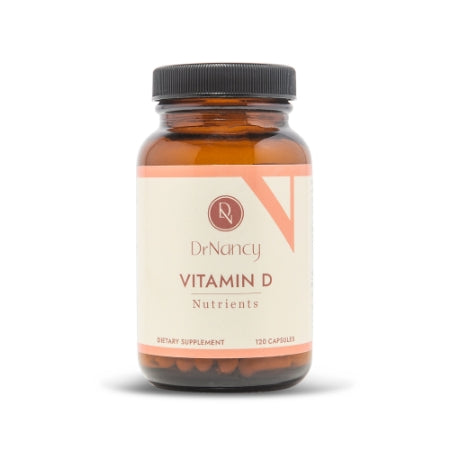5 Things You SHOULDN’T Put In Your Smoothie to Lose Weight

Smoothies can be a huge part of a successful health and weight loss journey, but only when done right. Have you ever stopped to think if you are putting foods in your smoothie that are hindering your weight loss? You may be surprised that, besides the obvious foods you shouldn’t add (such as heavy cream or chocolate), there are other foods that will make your weight loss journey just that little bit harder than it could be if you omitted these foods from your smoothies. (And don’t we all wish it could be a little easier?)
We asked Dr. Rahnama to tell us which 5 foods you need to stop putting in your smoothies, and here’s what she told us:
1. Nuts and Nut Butters
Nuts and nut butters may sound like a delicious way to get some extra good fats into your smoothies, but they’re usually doing more harm than good. Dr. Rahnama told us, “You don’t want to avoid fats because fats add to satiety – it’s what keeps you full. But they’re very calorically dense.”
If you’re doing a smoothie fast as part of an intermittent fasting diet, or need to get healthy fats into your smoothies because you can’t elsewhere in your diet, turn to avocado. Gram-for-gram, avocados contain 160 calories per 100 grams, while peanuts contain a huge 567 calories. That means one tablespoon of peanut butter in your smoothie will add around 100 calories, while half an avocado will offer you 80 calories and more nutrition.
2. Fruit Juices
If you’ve ever decided to add some apple or orange juice to your smoothie to give it more liquidity, you’re not alone. However, using juice over water can be a major mistake! As Dr. Rahnama told us, “Juices are the worst thing you could ever add.” Most fruit juice on the market has added sugars, and even if they don’t, they’re concentrated fruit, and so are, essentially, pure sugar. When you add a whole apple, you’re getting a lot of water and fiber content. When you add the same volume of apple juice, you’re adding hundreds of additional calories of sugar. If your chosen juice is pulp-free, you’re not even going to get the benefit of fiber, so they’re best avoided.
3. Oat Milk
Oat milk is a really popular alternative to dairy milk, but it’s not a great base for your smoothie. “Oat milk has a lot of hidden sugar in it,” Dr. Rahnama told us. Water is going to be the best thing to add if your primary goal is weight loss, but if you must add milk, consider unsweetened almond or coconut milk, and always look at the nutritional label. In general, unsweetened almond milk is higher in protein, healthy fats, and vitamins, and is lower in calories (about half).
4. Tropical Fruit (Bananas!)
Tropical fruits may offer us great flavors, but they’re best kept to a minimum in our slim-down smoothies. All tropical fruits are often naturally high in sugar and low in fiber compared to other fruits. For example, a typical banana (about 100 grams) has 89 calories, 12g of sugar, 23g of carbs, and just 3g of fiber. Compare that to a raspberry, and a 100-gram serving offers 64 calories, 4g of sugar, 15g of carbs, and 8g of fiber.
Fruits with the lowest sugar content are lemons and limes, raspberries, strawberries, blackberries, kiwis, grapefruit, and watermelon. As you can see, with raspberries and strawberries at your disposal, you don’t have to stick to green smoothies either!
5. Natural Sweeteners (Such as Honey or Agave Syrup)
So you’ve made your ultra-healthy smoothie; it’s full of celery, spinach, an apple, and a handful of blueberries for the sweetness and health benefits. You taste it and… well, it’s not what you hoped. So you go to the cupboard to grab a squirt of ‘organic’ honey or agave – STOP! “It’s just sugar,” Dr. Rahnama said. “If you compare sugar dissolved in water with honey and agave by volume, they all have the same amount of sugar.”
The problem is, we feel like they’re better for us than sugar because they’re natural. But regardless of whether it came from sugar cane or produced by bees, it’s still sugar, so resist the urge to add sugar and go for a high-fiber fruit instead.
“You’re trying to avoid two things: a) excess sugar, and b) unnecessary fats,” Dr. Rahnama said. By choosing the right base and strategically adding high fiber, low sugar fruits, you can produce a great-tasting smoothie that’s just as good for you as it tastes. Another thing to note before you head off to make your healthy smoothies is to resist the urge to remove the pulp.
“The fiber in the fruit slows down the absorption of the sugar, which lowers its glycemic index.” - Dr. Nancy
When you eat the pulp as well as the juice, your body will take up the sugar more slowly, helping keep your insulin levels balanced, which is essential to avoid holding onto excess weight. If you really can’t stand pulp, try adding a fiber powder such as our Fiber Smooth, so you can reap the benefits.
Dr. Nancy Rahnama, MD, ABOM, ABIM, is a medical doctor board certified by both the American Board of Obesity Medicine and the American Board of Internal Medicine. Her specialty is Clinical Nutrition, that is, the use of nutrition by a medical doctor to diagnose and treat disease. Dr. Rahnama has helped thousands of people achieve their goals of weight loss, gut health, improved mood and sleep, and managing chronic disease.






